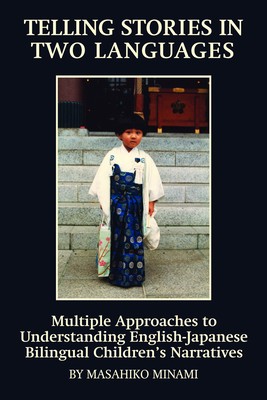
- We will send in 10–14 business days.
- Author: Masahiko Minami
- Publisher: Information Age Publishing
- ISBN-10: 161735354X
- ISBN-13: 9781617353543
- Format: 15.6 x 23.4 x 1.4 cm, softcover
- Language: English
- SAVE -10% with code: EXTRA
Reviews
Description
The topic of bilingualism has aroused considerable interest in research on language acquisition in recent decades. Researchers in various fields, such as developmental psychology and psycholinguistics, have investigated bilingual populations from different perspectives in order to understand better how bilingualism affects cognitive abilities like memory, perception, and metalinguistic awareness. Telling Stories in Two Languages contributes to the general upsurge in linguistically related studies of bilingual children. The book's particular and unique focus is narrative development in a bilingual and multicultural context. The book is particularly important in an increasingly pluralistic and multicultural United States, where there are large numbers of children from increasingly diverse cultural and linguistic backgrounds. Telling stories is important in the context of language and communication development because it is often by means of this activity that children develop the skill of presenting a series of events both in speech and writing. However, varying concepts of literacy exist in different societies, and literacy has different social and personal implications in different social and cultural contexts. In our schools, teachers are expected to teach what is relevant for students in the dominant cultural framework, but it would benefit those teachers greatly to have an understanding of important differences in, for example, narrative styles of different cultures. Bilingualism or even multilingualism is all around us. Even in the United States, where a single language is clearly predominant, there are hundreds of languages spoken. Speaking more than one language may not be typical, but is so common in modern times that it would be senseless to ignore its many implications. The study of narratives told by children in both English and Japanese that are presented in this book will provide an important point of reference for research aimed at teasing apart the relative contributions of linguistic abilities and cultural conceptions to bilingual children's narrative development.
- Author: Masahiko Minami
- Publisher: Information Age Publishing
- ISBN-10: 161735354X
- ISBN-13: 9781617353543
- Format: 15.6 x 23.4 x 1.4 cm, softcover
- Language: English English
The topic of bilingualism has aroused considerable interest in research on language acquisition in recent decades. Researchers in various fields, such as developmental psychology and psycholinguistics, have investigated bilingual populations from different perspectives in order to understand better how bilingualism affects cognitive abilities like memory, perception, and metalinguistic awareness. Telling Stories in Two Languages contributes to the general upsurge in linguistically related studies of bilingual children. The book's particular and unique focus is narrative development in a bilingual and multicultural context. The book is particularly important in an increasingly pluralistic and multicultural United States, where there are large numbers of children from increasingly diverse cultural and linguistic backgrounds. Telling stories is important in the context of language and communication development because it is often by means of this activity that children develop the skill of presenting a series of events both in speech and writing. However, varying concepts of literacy exist in different societies, and literacy has different social and personal implications in different social and cultural contexts. In our schools, teachers are expected to teach what is relevant for students in the dominant cultural framework, but it would benefit those teachers greatly to have an understanding of important differences in, for example, narrative styles of different cultures. Bilingualism or even multilingualism is all around us. Even in the United States, where a single language is clearly predominant, there are hundreds of languages spoken. Speaking more than one language may not be typical, but is so common in modern times that it would be senseless to ignore its many implications. The study of narratives told by children in both English and Japanese that are presented in this book will provide an important point of reference for research aimed at teasing apart the relative contributions of linguistic abilities and cultural conceptions to bilingual children's narrative development.


Reviews